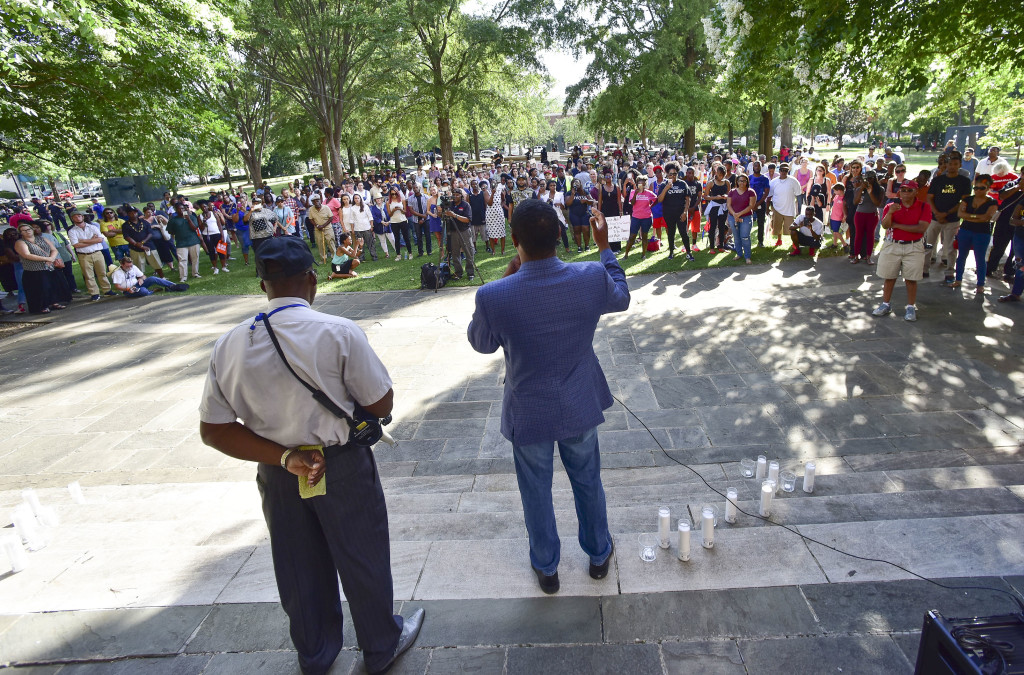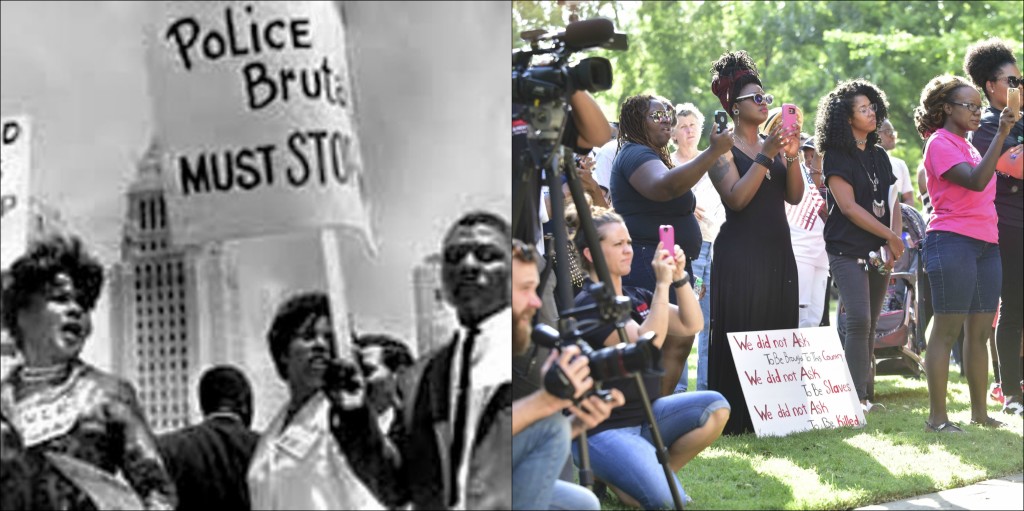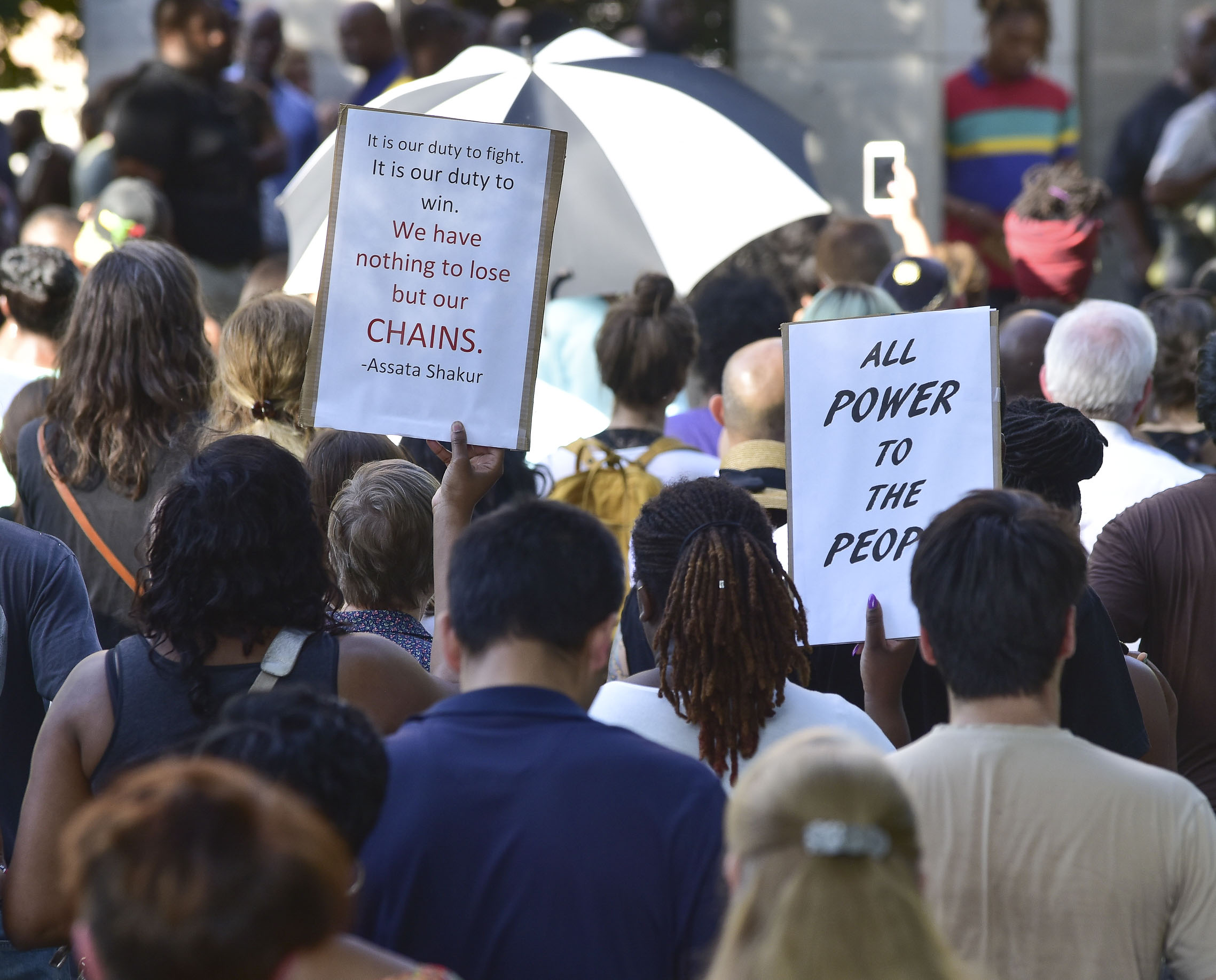
By Barnett Wright
The Birmingham Times
Core activists of the Black Lives Matter (BLM) movement are quick to remind people that the current wave of protests are “not your grandmamma’s civil rights movement”—and that may be a problem.
To its credit, BLM has hundreds of thousands of supporters, including President Barack Obama, who has defended the movement and the right of activists to demonstrate in cities across the United States.
“One of the great things about America is that individual citizens and groups of citizens can petition their government, can protest, can speak truth to power,” Obama told reporters last week. “That is sometimes messy and controversial, but because of that ability to protest and engage in free speech, America over time has gotten better. We’ve all benefited from that.”
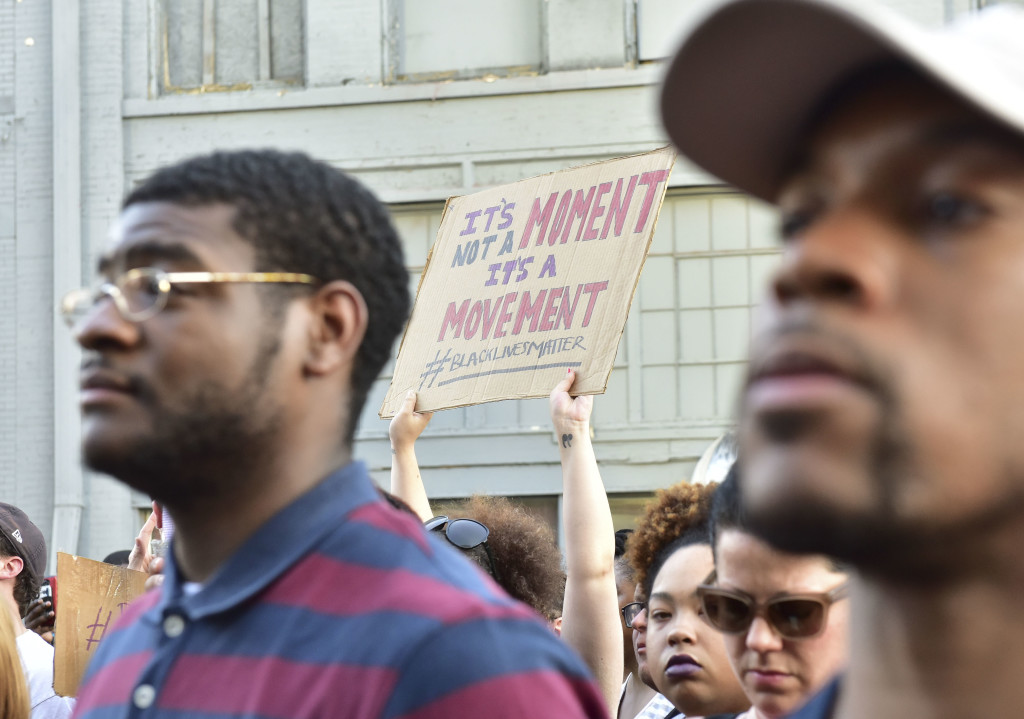
BLM has been at the forefront of demonstrations since it was founded in 2012, after black teenager Trayvon Martin was killed in Florida. The movement gained national attention about two years later when Michael Brown, an unarmed black teenager, was shot to death by a police officer in Ferguson, Mo. Since then, the group has protested following the deaths of Sandra Bland in Texas; Freddie Gray in Maryland; Eric Garner in New York, and several others.
Well-Defined Goals
But many, including some blacks, have questioned the group’s goals.
Barbara Reynolds, a 1960s civil rights activist, wrote last year in a Washington Post article: “Without a clear strategy and well-defined goals, BLM could soon crash and burn out.”
Business mogul Oprah Winfrey said, “What I’m looking for is some kind of leadership to come out of this to say, ‘This is what we want. This is what has to change. These are the steps we need to take to make these changes. And this is what we’re willing to do to get it.’”
Winfrey became the target of tweets from young activists, who denounced her as elitist and “out of touch.”
But Winfrey had a point, according to those familiar with the civil rights movement, which led to landmark civil rights legislation in 1964 and 1965.
“In our movement, we were not only spiritual, we were thoughtful,” said former U.S. Ambassador to the United Nations Andrew Young, who served as a lieutenant to the Rev. Dr. Martin Luther King Jr. during the civil rights demonstrations.
“The reason our campaigns for change were successful in Montgomery and Birmingham was because they were undergirded by boycotts. We didn’t burn down any businesses. I don’t see that discipline here. We also trained people not to get angry because we knew that our minds, not our emotions, were our most powerful weapons. We knew—to lose your wits was to lose your life.”
Leadership
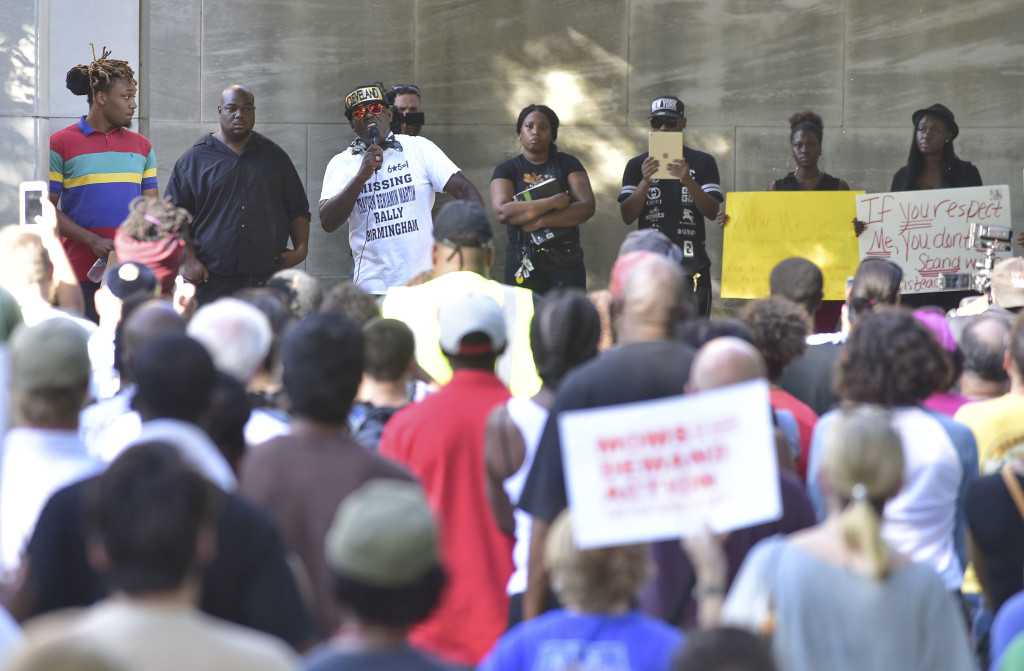
Unquestionably, King was the leader of the civil rights movement. No single person appears to have emerged as leader of BLM, but members of the group say it’s a misconception to believe the group is leaderless.
“Many Americans of all races are enamored with Martin Luther King as a symbol of leadership and what real movements look like,” they write on their website. “But the Movement for Black Lives, another name for the BLM movement, recognizes many flaws with this model. … In those old models, leadership favored the old over the young, attempted to silence gay and lesbian leadership, and did not recognize the leadership possibilities of transgender people at all. Finally, a movement with a singular leader or a few visible leaders is vulnerable because those leaders can be easily identified, harassed, and killed, as was the case with Dr. King. By having a leader-full movement, BLM addresses many of these concerns.”
Another major factor in the success of the civil rights movement was its well-defined strategy of nonviolence, which everyone followed.
King insisted on nonviolence in the face of brutality. When a bomb exploded at the 16th Street Baptist Church in Birmingham during Sunday school classes, killing four young girls and injuring 23 others, many blacks wanted to retaliate—among them, Illinois Congressman Bobby Rush, who was a member of the Black Panther Party for Self-Defense in the 1960s.
“I thought Dr. King was too milquetoast, too passive,” Rush said. “I didn’t understand the power of nonviolence, so I didn’t adhere to his philosophy and turned the other cheek.”
Ben Jealous, former president of the National Association for the Advancement of Colored People (NAACP), the nation’s oldest civil rights organization, said the nonviolent campaign won American hearts and minds.
“The movement was moving toward a crescendo that we would see in 1964 and 1965, when landmark civil rights legislation was passed,” he said.
Setback
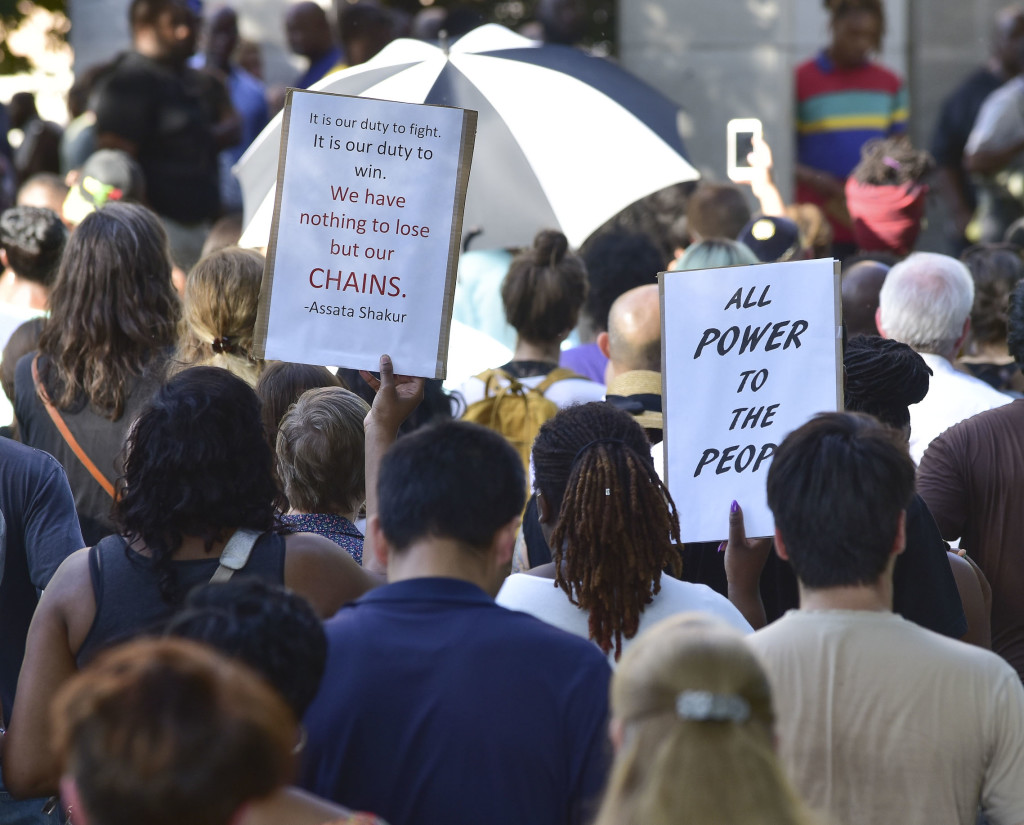
The vast majority of BLM protests have been peaceful. But in the aftermath of the deaths of two unarmed blacks in Baton Rouge and Falcon Heights at the hands of police, the group seemed to suffer an apparent setback when a sniper killed five white officers in Dallas at the end of a peaceful protest against deadly police-involved shootings of black men.
The suspected gunman, Michael Xavier Johnson, told police before he was killed that he was upset about the recent police shootings of two black men—Alton Sterling in Baton Rouge, La., and Philando Castile in Falcon Heights, Minn.—and wanted to kill white people, especially officers, according to Dallas Police Chief David Brown.
Critics immediately condemned BLM. New York Police Department Commissioner Bill Bratton said in a radio interview that BLM protesters should stop “yelling and screaming” at cops about police brutality because it “accomplishes nothing.”
Others find value in the movement. Fredrick C. Harris, professor of political science and director of the Center on African American Politics and Society at Columbia University, wrote in Dissent magazine that the BLM protests have not only put police reform on the policy agenda but also demanded that American society reconsider how it values black lives.
“The police brutality and killings are not, to be sure, new; the emerging movement against them, however, is. The upsurge in antiracist organizing is a break from what we normally consider black activism in the United States,” he wrote.
Organizers of the BLM movement took to Twitter to decry the murders of the police officers.
“#BlackLivesMatter advocates dignity, justice, and freedom. Not murder,” the organization tweeted on July 8, following the Dallas shootings.
President Obama, speaking this week at a memorial service for the five police officers who were killed, said, “When anyone, no matter how good their intentions may be, paints all police as biased or bigoted, we undermine those officers we depend on for our safety.
“And as for those who use rhetoric suggesting harm to police, even if they don’t act on it themselves, well, they not only make the jobs of police officers even more dangerous, but they do a disservice to the very cause of justice that they claim to promote.”
